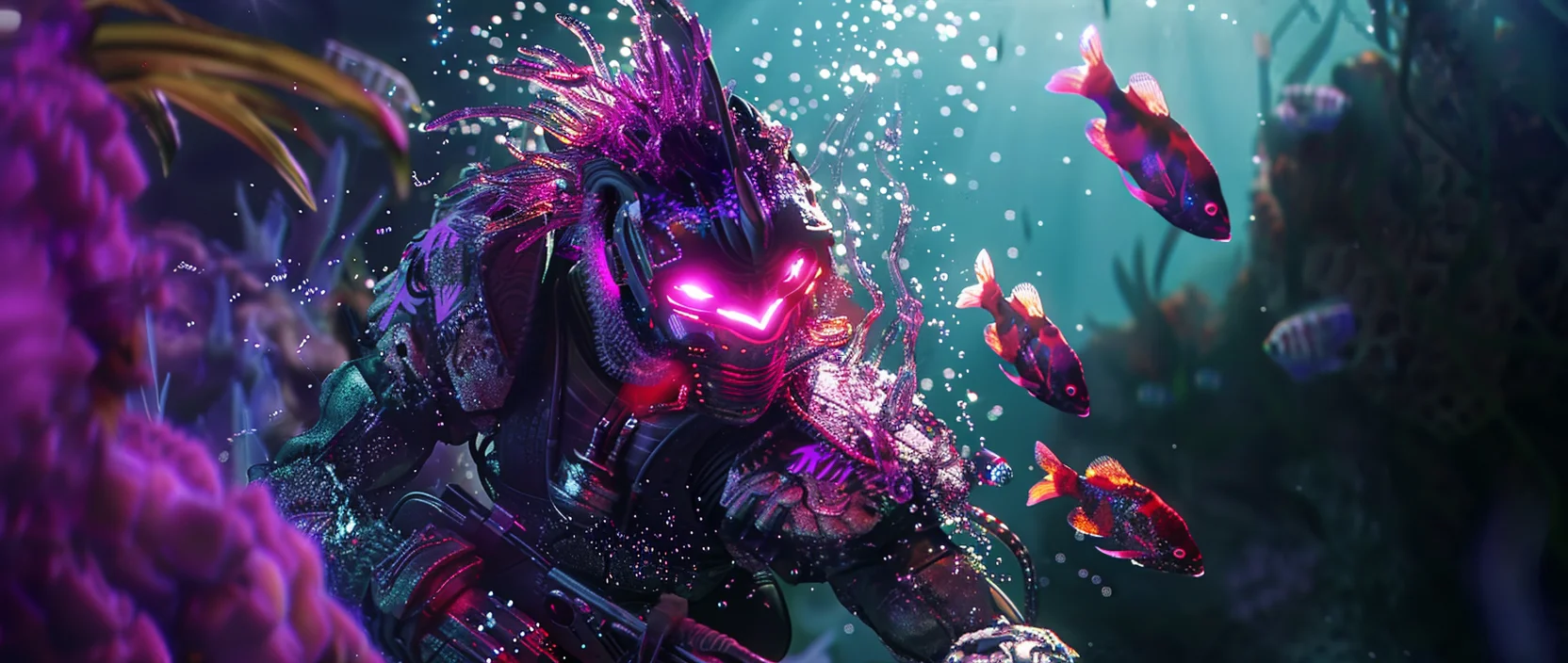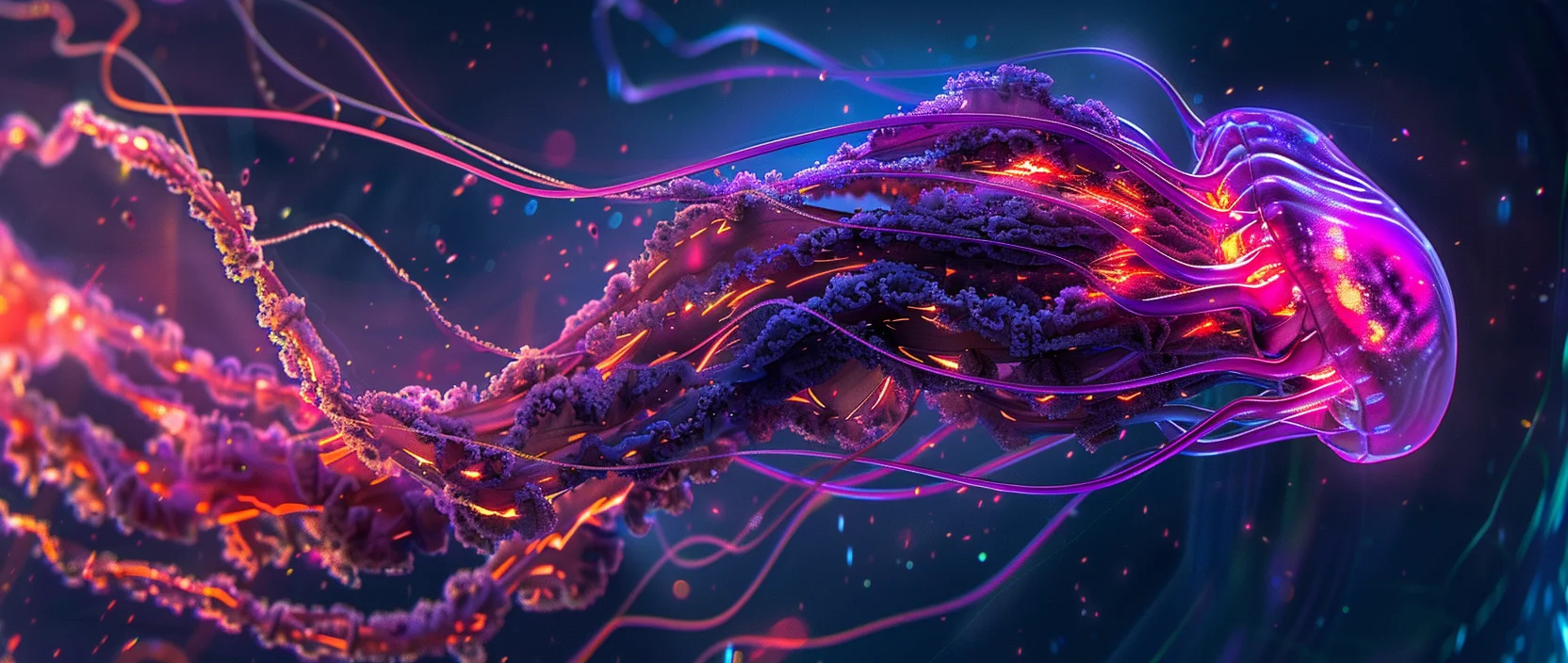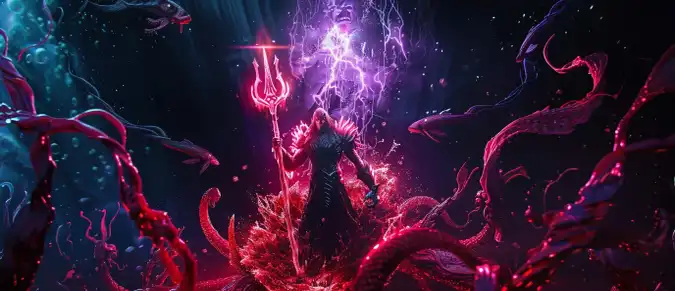Aqua Farm is an adventure blockchain RPG where players explore an underwater world, battle sea monsters, nurture Aree creatures, and earn tokens. Built on the Polygon blockchain, the game combines elements of classic RPG gameplay, Web3-based economy, and NFT collection. Its main tokens, AES and PODO, power the in-game economy and ecosystem participation. Aqua Farm showcases how immersive gameplay can coexist with sustainable tokenomics, maintaining a balance between fun and reward.
Contents
- World and Concept of Aqua Farm
- Gameplay and Mechanics
- Economy and Tokenomics
- Advantages and Risks
- Key Parameters of Aqua Farm
- Conclusion

1. World and Concept of Aqua Farm
The story of Aqua Farm unfolds in a vast oceanic world known as Aqua World, where humanity coexists with mystical beings called Aree — guardians of PODO energy. The narrative tells of a dark force that has stolen the ocean’s life energy, disrupting the natural balance, and now players, as Guardians alongside their Aree allies, must restore harmony. This setting creates not just a game mechanic but a fully realized universe built around ecology and digital rebirth.
The world design is inspired by marine exploration and fantasy aesthetics, blending resource management with adventure. Developers have focused on ensuring that every feature — from quests to NFTs — aligns with the core storyline. Thus, Aqua Farm transcends the typical “play-to-earn” concept and evolves into a narrative-driven RPG with both social and economic layers.
The team at THEMOMENT Labs aims to craft a lasting universe where each player contributes to collective progress. Social features, in-game events, and cross-platform integration have been introduced to build a strong community foundation. Future updates will expand the world with new zones, PvP modes, and story campaigns, ensuring long-term engagement and a shared sense of purpose among players.
2. Gameplay and Mechanics
Gameplay in Aqua Farm revolves around exploration, combat, resource management, and ecosystem interaction. Players command Aree to traverse oceanic maps, complete quests, defeat enemies, and protect energy sources of PODO. The core system blends PvE combat, collectible mechanics, and strategy, creating a dynamic and tactical experience.
Key Gameplay Features:
- Turn-based battles in PvE mode with strategic use of Aree abilities;
- Ocean map exploration to discover artifacts and resources;
- Guild system for cooperative missions and shared earnings;
- Use of NFTs for character upgrades and trading assets;
- Weekly tournaments and events rewarding AES and PODO tokens.
The character progression system resembles traditional RPGs: players upgrade their Aree, unlock new skills, and evolve them into stronger forms. Each Aree is unique, featuring different traits and rarities that impact combat strategy. In addition to PvE, the developers are testing PvP tournaments that pit teams of players against each other for top rankings and exclusive rewards, adding depth and competition to the experience.
Frequent updates introduce new missions, bosses, and seasonal content, encouraging players to stay active. Even routine activities — resource gathering, crafting, or training — require strategic decision-making. This structure ensures that Aqua Farm feels alive and constantly evolving, keeping players motivated to explore deeper into its aquatic world.
3. Economy and Tokenomics
The Aqua Farm economy is powered by two main tokens — AES (Aree Shards) and PODO. AES serves as the utility token for gameplay operations, staking, and rewards. PODO functions as an in-game resource, mined through play and used for Aree evolution, item creation, and upgrades. Together, they form a dual-token structure designed for long-term stability and player engagement.
According to the project’s documentation, the total supply of AES is capped at 1 billion tokens, distributed among players, investors, the team, and ecosystem reserves. PODO, on the other hand, has an elastic emission model that depends on player activity and in-game generation. This structure prevents inflation and maintains economic balance.
Main Use Cases for Tokens:
- Purchasing NFT characters (Aree and Guardians);
- Participating in tournaments and PvE battles for AES rewards;
- Staking PODO for passive income;
- Trading NFT assets on external marketplaces;
- Voting on DAO proposals and game governance.
The economy promotes collaboration between players and developers, encouraging sustainable participation through incentives and shared growth. The integration of AES and PODO across the broaderPandemic Multiverse ensures token interoperability. Polygon’s efficiency enables low-cost, high-speed transactions, which is vital for scalability. Future updates plan to introduce token burn mechanisms, maintaining scarcity and ensuring long-term value stability.

4. Advantages and Risks
Like any blockchain project, Aqua Farm combines strong advantages with certain risks. Among its key strengths are high-quality graphics, deep storytelling, and a well-balanced economy designed for long-term sustainability. The game stands out with its atmospheric underwater setting and engaging gameplay that appeals to both beginners and experienced players. NFT integration provides not only collectible value but also practical utility, while the use of the Polygon blockchain ensures low fees and fast transactions.
Potential risks include the volatility of the AES and PODO tokens, intense competition in the GameFi sector, and the need for consistent content updates. However, the THEMOMENT Labs team actively engages with the community, releases transparent development roadmaps, and maintains open communication — all of which strengthen player trust and support the project’s long-term growth.
Despite some technical challenges related to Polygon’s scalability, Aqua Farm demonstrates a robust architecture and stable ecosystem. With its focus on player interaction and metagame expansion, the project represents the new wave of GameFi — combining gameplay, economy, and community-driven engagement into a unified Web3 experience.
5. Key Parameters of Aqua Farm
Before reviewing the technical parameters, it’s important to emphasize that Aqua Farm combines gamification, decentralization, and economic sustainability. Each element of the ecosystem — from tokens to NFTs — is designed to ensure long-term value and meaningful community participation. This design allows the project to evolve beyond a GameFi title into a growing Web3 universe where gameplay and economy evolve together. For better clarity, the key characteristics of Aqua Farm are summarized in the table below:
| Parameter | Description |
|---|---|
| Platform | Polygon (Layer 2 for Ethereum) |
| Genre | RPG with strategy, collection, and farming elements |
| Main Tokens | AES (Aree Shards) and PODO |
| NFT Elements | Aree, Guardian, and Farm plots |
| Game Platforms | Android, iOS, Web |
| Economic Model | Play-to-Earn, staking, NFT trading, DAO governance |
| Developer | THEMOMENT Labs |
The table demonstrates Aqua Farm’s commitment to Web3 integration and technological adaptability. NFT ownership decentralizes gameplay, while DAO governance empowers community-driven decision-making. The developers plan to expand the ecosystem toward a connected metaverse with cross-game assets and events, turning Aqua Farm from a single RPG into a collaborative platform that unites players and their digital identities.
6. Conclusion
Aqua Farm exemplifies how Web3 gaming can merge entertainment and ownership into a cohesive experience. It blends strategy, RPG, and DeFi-inspired systems into an immersive world where users genuinely control their assets. With Polygon’s infrastructure and a refined dual-token economy, Aqua Farm stands ready to compete in the broader GameFi landscape.
Continued updates, new gameplay modes, and community engagement will determine its long-term success. With its stunning visuals, player-driven economy, and sustainable design, Aqua Farm is positioned as a defining example of the new generation of Web3 RPGs. In the long run, it has the potential to become one of the cornerstone games of the Polygon-powered metaverse.




